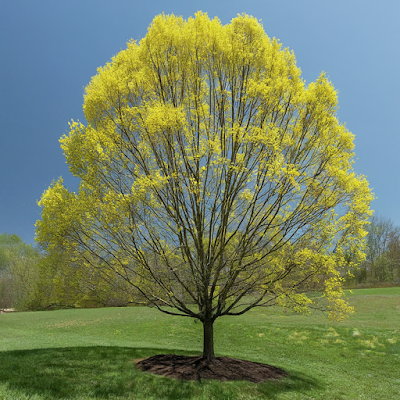Cladrastis kentukea, commonly known as the Kentucky yellowwood or American yellowwood, is a deciduous tree native to the southeastern United States. Its natural habitat spans from western North Carolina to eastern Oklahoma and from southern Missouri and Indiana down to central Alabama. This tree is notable for its smooth gray bark, broad and rounded crown, and its compound pinnate leaves that can reach 20–30 cm in length with 5-11 leaflets. During the fall, the foliage turns a stunning mix of yellow, gold, and orange, making it an attractive addition to landscapes.
Kentucky yellowwood is cherished for its wisteria-like racemes of fragrant white flowers that bloom in early summer, typically every second or third year, adding a spectacular display to gardens. The tree produces pods containing 2-6 seeds as its fruit. It's a medium-sized tree, usually reaching 10–15 meters in height, but it can grow up to 27 meters under exceptional circumstances.
This tree is widely appreciated as an ornamental plant due to its attractive flowers and overall appearance. However, it's important to note that the trunk may divide near the ground into multiple branches, which could make it prone to limb breakage. Proper pruning is essential to maintain good branch angles and prevent potential damage over time.
The wood of Cladrastis kentukea is yellow to pale brown and is used in small amounts for specialist furniture, gunstocks, and decorative woodturning. The tree's heartwood, which turns yellow when freshly cut, gave rise to its common name "yellowwood." It's also recognized for its ecological benefits, supporting and attracting bees and butterflies, and has received recognition from the Pennsylvania Horticultural Society and the Society of Municipal Arborists for its ornamental value.





No comments:
Post a Comment